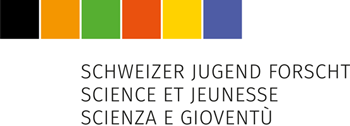Physik | Technik
Michael Klein, 2002 | Wädenswil, ZH
My interest in acoustics dates back to past engagements in musical creation. The paper «Musical Ferrite» investigates the phenomenon of a sound being created by objects made out of ferrite material that are inserted into a periodically changing magnetic field. The buzzing is annoying to the human ear and causes damage in machines like voltage transformers. My theoretical explanation of the phenomenon is based on my knowledge of magnetism, acoustics and a newly acquired understanding of magnetostriction. Key is the magnetic hysteresis loop. I formulated various hypotheses describing the impact of a ferrite rod’s dimensions and material parameters (magnetic permeability, coercive magnetic field strength), as well as the effect of the variations in the magnetic field on the produced sound (frequency, intensity). The analysis of the experimental results justified all my hypotheses but one (material parameter), for which alternative explanations, like specific power loss of core material, were discussed.
Introduction
Preparing for the Swiss Young Physicists› Tournament 2020 (SYPT) involved exploring the phenomenon of a ferrite rod producing a sound when inserted into a coil fed from a signal generator. This led to the research question for the paper «Musical Ferrite»: «To what extent can the vibrations of a ferrite rod inserted into a periodically changing magnetic field be described by physical theory?» The goal of the paper was to find theoretical answers as well as experimentally confirming the formulated hypotheses. Since the research question incorporated all elements of Problem 4 of the SYPT 2020, the paper provided an adequate solution to this problem.
Methods
First, I delved into the theory and did some research (including approaching experts at ETH) on the effects of magnetostriction on ferrite objects. My focus was on the magnetostrictive hysteresis loop, which models the material changes in a ferrite rod as a magnetic field is applied to it. Next, I searched the market to determine which material (coils, ferrite rods) were available and affordable. I then designed my experiments and devised various hypotheses to describe the expected results. For conducting the experiments, the ferrite rods were placed in periodically changing magnetic fields generated by solenoids fed from a signal generator. The acoustic waves were measured, including frequency spectrums done with Fast Fourier Transform. Thereafter, the analysis, discussion, conclusion and a critical reflection were written. To round it all up, I studied my Swiss Young Physicists› Tournament (SYPT) preparation of the previous years and described how to get ready for the SYPT 2020 with Problem 4.
Results
Various experiments were conducted with the procured materials (5 ferrite rods, 2 solenoids), and many measurements were made. The results showed that the most important factor for the amplitude of the sound wave that was created by the ferrite rod was its dimensions. The larger the volume of the rod, the larger the absolute change in its shape or size, thus the sound produced was louder. Another result of note is that all rods reacted similarly in different coils and in different magnetic fields.
Discussion
The experiments were successful, as the sound that the ferrites were expected to produce could be generated without any difficulties. The results of the repeated trials were consistent, and the analysis fit with the material specification data sheets. The predicted outcomes were all experimentally confirmed, except for one: neither higher magnetic permeability nor lower coercive magnetic field strength resulted in a higher amplitude of the sound. A reasonable theoretical explanation involving additional material parameters (specific power loss of core material) was found. Further experiments might underline the importance of this parameter or even other ones. Expanding the theoretical model would allow for a deeper understanding of the phenomenon.
Conclusions
From the research and the analysis of the procured data I concluded that the most important factors in the magnetostriction of ferrite rods are: (i) volume/dimensions (ii) specific power loss of core material (iii) reaction of material to a magnetic field (illustrated by hysteresis loop). Suggested further investigations include theory expansion, consideration of additional material parameters and experiment broadening to include more aspects and materials. These might result in ways to diminish unwanted noises generated by ferrite building parts in machines.
Würdigung durch den Experten
Dr. Christian Stamm
Michael Klein untersucht in seiner Arbeit die Grundlagen eines alltäglichen Phänomens: Das Brummen eines Transformators unter Spannung. Nach Vertiefung in Magnetismus und den damit verbundenen Materialeigenschaften stellte er mehrere Hypothesen auf, wie die Stärke dieser ungewollten Geräusche beeinflusst werden kann. Anschliessend führte Herr Klein Experimente mit verschiedenen Ferrit-Materialien durch, um die Hypothesen zu testen. Die Ergebnisse können dazu dienen, das Transformator-Brummen zu reduzieren. Die sehr methodische und wissenschaftliche Herangehensweise ist bemerkenswert.
Prädikat:
sehr gut
Rämibühl-Realgymnasium, Zürich
Lehrer: Lars Fleig



